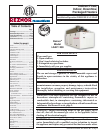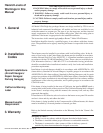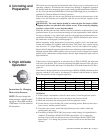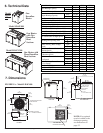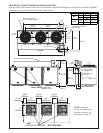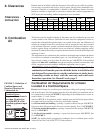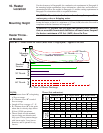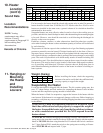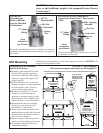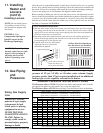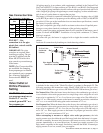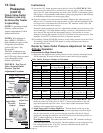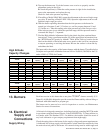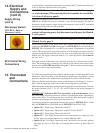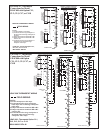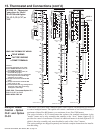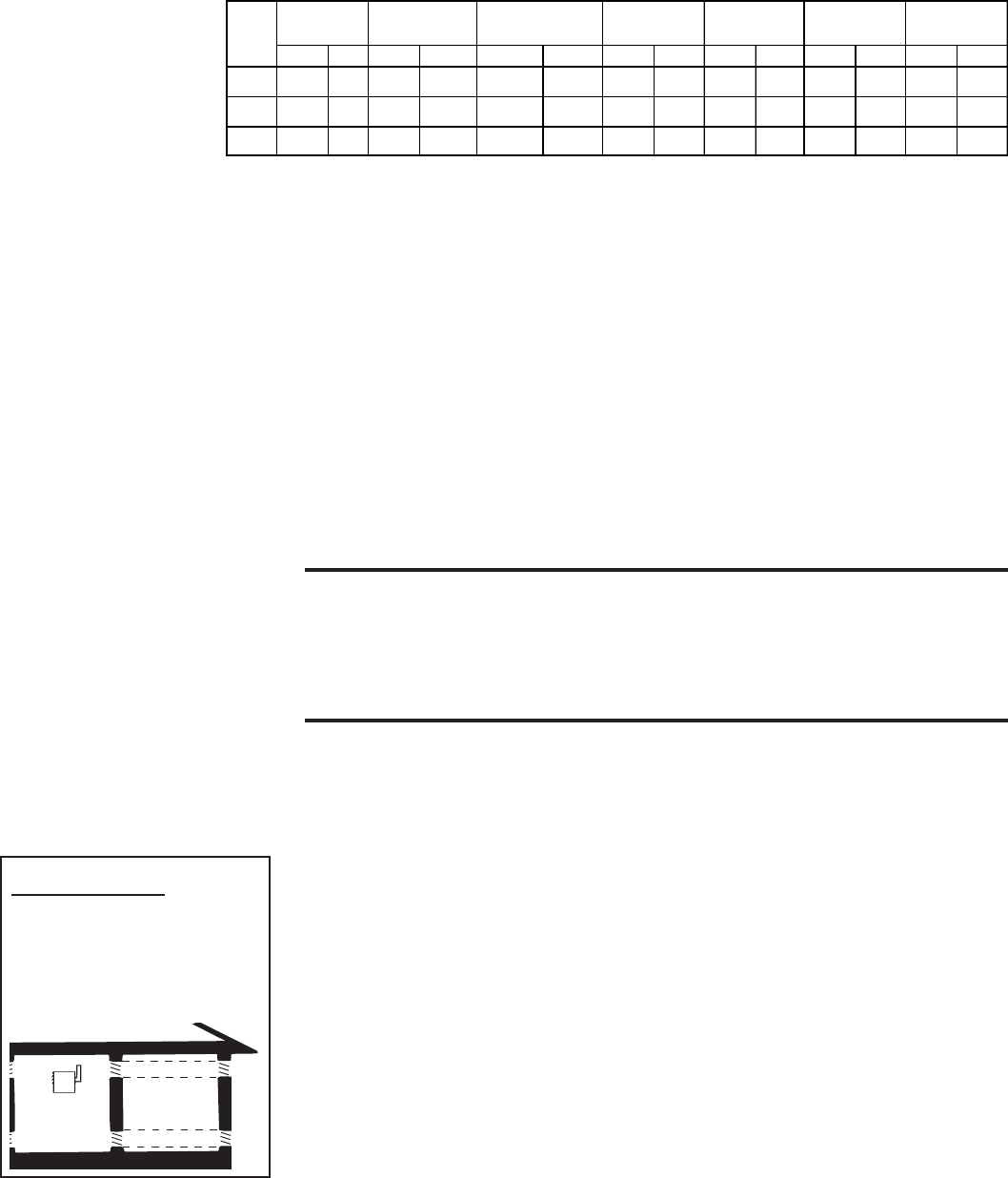
Form RZ-NA-I-LDAP, P/N 207733 (Rev 2), Page 6
Confined Space:
A space whose volume is
less than 50 cubic feet
per 1000 BTUH of the
installed appliance input
rating
Combustion Air Requirements for a Heater
Located in a Confined Space
FIGURE 2 - Definition of
Confined Space and
Required Openings for
Combustion Air
(3)
(3)
(1)
(1)
(2)
(2)
Confined
Space
Heaters must be installed so that the clearances in the table are provided for combus-
tion air space, inspection and service, and for proper spacing from combustible con-
struction. Clearance to combustibles is defined as the minimum distance from the
heater to a surface or object that is necessary to ensure that a surface temperature of
90°F above the surrounding ambient temperature is not exceeded.
8. Clearances
9. Combustion
Air
This heater must be supplied with the air that enters into the combustion process and
is then vented to the outdoors. Sufficient air must enter the equipment location to
replace that exhausted through the heater vent system. In the past, the infiltration of
outside air assumed in heat loss calculations (one air change per hour) was assumed
to be sufficient. However, current construction methods using more insulation, vapor
barriers, tighter fitting and gasketed doors and windows, weather-stripping, and/or
mechanical exhaust fans may now require the introduction of outside air through wall
openings or ducts.
The requirements for combustion and ventilation air depend upon whether the heater
is located in a confined or unconfined space. An "unconfined space" is defined as a
space whose volume is not less than 50 cubic feet per 1000 BTUH of the installed
appliance. Under ALL conditions, enough air must be provided to ensure there will
not be a negative pressure condition within the equipment room or space.
WARNING: A Model LDAP power-vented heater is designed to take
combustion air from the space in which the heater is installed and is
not designed for connection to outside combustion air intake ducts.
Connecting outside air ducts voids the warranty and could cause
hazardous operation. See Hazard Levels, page 2.
Clearances -
inches/mm
inches mm inches mm inches mm inches mm inches mm inches mm inches mm
400
12 305 6 152.4 18 457 2 50.8 18 457 2 50.8 60 1524
800
12 305 6 152.4 18 457 2 50.8 18 457 2 50.8 60 1524
1200
12 305 6 152.4 18 457 2 50.8 18 457 2 50.8 60 1524
Bottom
Disconnect
Side
Side
Size
Top
Flue
Connector
Front
(
Access Panel
)
Rear
Do not install a heater in a confined space without providing wall openings leading to
and from the space. Provide openings near the floor and ceiling for ventilation and air
for combustion as shown in FIGURE 2, depending on the combustion air source as
noted in Items 1, 2, and 3 below.
Add total BTUH of all appliances in the confined space and divide by figures below
for square inch free area size of each (top and bottom) opening.
1. Air from inside the building - openings 1 square inch free area per 1000 BTUH.
Never less than 100 square inches free area for each opening. See (1) in FIGURE 2.
2. Air from outside through duct - openings 1 square inch free area per 2000 BTUH.
See (2) in FIGURE 2.
3. Air direct from outside - openings 1 square inch free area per 4000 BTUH. See
(3) in FIGURE 2.
NOTE: For further details on supplying combustion air to a confined space, see the
National Fuel Gas Code ANSI Z223.1a (latest edition).



